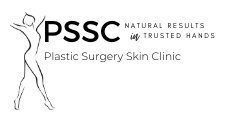WHAT IS SKIN CANCER?
Many people with fair complexions are surprised to discover that skin cancer is the most common cancer to threaten their health. Interestingly, there is a very intimate correlation between the visible photo-damage (rough, leathery, wrinkled skin) and the skin cancers that you will eventually develop and your accumulated lifetime UVR (ultraviolet light rays / radiation) exposure.
The number of sun-related burns and deep tans that one experiences over the years is also strongly linked to your future potential for developing skin cancers. There is a common misconception that a tan is somehow protective and healthy.
There is, however, no such thing as a healthy tan. A tan is a sign of sun or photo-damage. In short, the common thread behind both “aging” skin and skin cancer is your cumulative UVR exposure.
THE THREE MOST COMMON SKIN CANCERS
Unfortunately, the incidence of all skin cancers continues to rise. The three most common forms of skin cancer are basal cell skin cancer (BCC), squamous cell cancer (SCC) and malignant melanoma (MM). Receiving a diagnosis of skin cancer can be very unexpected and stressful. It’s important to put your health in the hands of an expert for treatment. At PSSClinic, our goal is to provide you with safe, effective and the most advanced treatment plans for the management of your skin cancer. PSSClinics’s expertise and surgical specialty training in treating skin cancers means that you will receive highly personalized and comprehensive care including holistic advice and education about the latest preventative, nonsurgical and surgical treatment plans. If you have skin lesions of concern, simply ask your family doctor to refer you to the PSSClinic for a consultation. To find out more information about our skin cancer procedures, feel free to contact us.
Basal Cell Skin Cancer (BCC)
Basal cell cancers (BCC) are the most common type of skin cancer, accounting for over 80% of all the skin cancers. It is the least aggressive skin cancer and is known for its slow growth. Because it does not travel around the body it is rarely fatal. However, it is locally aggressive and destroys the surrounding tissues. BCC’s are most commonly found on the head and neck areas or bodily areas that have had significant UV radiation exposure over the years. Patients who have had a diagnosis of BCC have a more than 40% chance of getting a second similar diagnosis within 5 years of their initial diagnosis. BCC’s can present as a small, shiny papule or a non-healing crater or sore. A biopsy is often used to confirm the diagnosis.
BCC TREATMENT
In its very early stages, BCC’s can be treated with focal topical modalities such as cryotherapy (liquid nitrogen), curettage or topical chemotherapy creams (Aldara, Zyclara, Effudex). For more global areas of damage Photodynamic Therapy (PDT) can be used to reverse early disease progression. PSSClinic is very adept and highly trained in the most advanced reconstructive surgical techniques including flaps and skin grafts. For those who require surgery, her careful technique will leave the least amount of scarring or trace after your curative surgery.
Squamous Cell Cancer (SCC)
Squamous cell cancers (SCC) accounts for 16% of all skin cancers and is the second most common skin cancer diagnosis. Once again, UV radiation and its damaging effects over the years is the major cause of SCC. It is a more aggressive skin cancer than BCC, presenting with more rapid growth and a propensity for spreading throughout the body via the lymphatics and bloodstream. If detected and treated early, most SCCs are curable. A few can be treated in their very early stages with topical therapies such as cryotherapy, Photodynamic Therapy or
Malignant Melanoma (MM)
Melanoma is the least common type of skin cancer (<5%) but it accounts for the vast majority of deaths attributable to skin cancer. It is an aggressive skin cancer that has a high propensity for spread through the lymphatics or blood stream. Early surgical management is the key to improving survival rates. Sometimes chemotherapy is warranted.
WHAT TO EXPECT FOLLOWING YOUR DIAGNOSIS
If you have been diagnosed and treated for skin cancer, it is likely an indicator that it is time for you to take stock of your sun habits and lifestyle. BCCs and SCCs make up the majority of skin cancers and usually they arise in the context of photo damaged skin. This damage accumulates over the years. The majority of skin cancers that arrive in your middle years have as much to do with your “sins in the sun” from your past, as they do the present. Moving forward it means you’ll benefit by getting educated to become sun smart. Yes, you can learn how to enjoy the elements without getting damaged. Topical broad spectrum SPF sunscreens have a role to play on your skin all year round; as do topical antioxidants. Established sun damage can be reversed. We can achieve this with a number of light and laser-based therapies, including Photodynamic Therapy. Let PSSClinic walk you through the process of learning an approach towards minimizing your sun damage. You will reduce your lifetime risk of skin cancer … as well as your wrinkles. It doesn’t matter if vanity measures or health risks are the factors that are driving you to learn more; get smart about skin care and sun exposure. You will reap the benefits on many counts.
